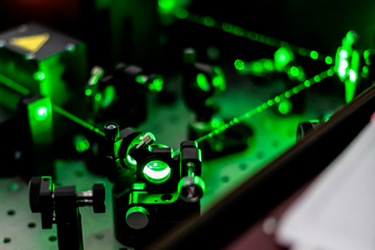Light Analysis

Near-Infrared (NIR) and Short Wave Infrared (SWIR) spectroscopy are powerful techniques for analyzing the composition and properties of materials across scientific, industrial, and environmental domains. Sensors Unlimited develops high-performance linear arrays and 2D focal plane arrays (FPAs) sensitive to wavelengths from 0.4 µm to 1.7 µm—and up to 2.6 µm for certain linear arrays—using advanced Indium Gallium Arsenide (InGaAs) technology. These detectors enable both spectral and spatial data acquisition, making them essential tools in modern spectroscopy.
In geoscience, SWIR/NIR spectroscopy excels at identifying minerals due to their distinct absorption features in this wavelength range. Materials such as hydroxyl-bearing minerals, sulfates, carbonates, and clays like Kaolinite and Alunite show strong spectral signatures around 1.4 µm and 2.2 µm. Earth observation satellites leverage this capability to map surface mineralogy with high accuracy.
In addition to mineral detection, NIR fluorescence spectroscopy is widely used for biological and chemical analysis. It supports applications ranging from organic matter detection and fungal biomass assessment to in vivo mapping of gases like Nitrous Oxide (NO). The ability of NIR/SWIR light to penetrate biological tissue makes it superior to visible light for non-invasive medical diagnostics.
Spectrometers using mirrors and diffractors guide incoming light to InGaAs linear arrays, providing real-time spectral data with high sensitivity. These technologies enable robust, versatile light analysis for a range of fields, including remote sensing, agriculture, environmental monitoring, and biomedical research, offering both high performance and adaptability across diverse analytical tasks.
Get unlimited access to:
Enter your credentials below to log in. Not yet a member of Photonics Online? Subscribe today.
